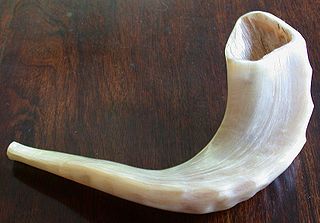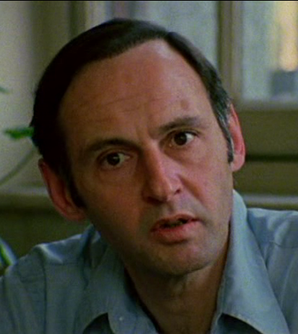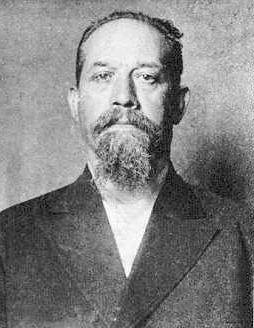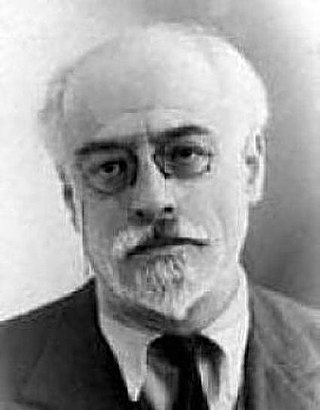Related Research Articles

Yom Kippur is the holiest day of the year in Judaism and Samaritanism. It occurs annually on the 10th of Tishrei, corresponding to a date in late September or early October.
Kol Nidre is a Hebrew and Aramaic declaration which is recited in the synagogue before the beginning of the evening service on the night of Yom Kippur. Strictly speaking, it is not a prayer, even though it is commonly spoken of as if it were a prayer. This declaration and its ceremonial accompaniment have been charged with emotional undertones since the medieval period, creating a dramatic introduction to Yom Kippur on what is often dubbed "Kol Nidrei night", with the entire Yom Kippur evening service popularly called Kol Nidrei.

In Judaism, the High Holy Days, also known as High Holidays or Days of Awe consist of:
- strictly, the holidays of Rosh Hashanah and Yom Kippur ;
- by extension, the period of ten days including those holidays, known also as the Ten Days of Repentance ; or,
- by a further extension, the entire 40-day penitential period in the Jewish year from Rosh Chodesh Elul to Yom Kippur, traditionally taken to represent the forty days Moses spent on Mount Sinai before coming down with the second ("replacement") set of the Tablets of Stone.

Paul Avrich was an American historian specialising in the 19th and early 20th century anarchist movement in Russia and the United States. He taught at Queens College, City University of New York, for his entire career, from 1961 to his retirement as distinguished professor of history in 1999. He wrote ten books, mostly about anarchism, including topics such as the 1886 Haymarket Riot, 1921 Sacco and Vanzetti case, 1921 Kronstadt naval base rebellion, and an oral history of the movement.

Luigi Galleani was an Italian insurrectionary anarchist best known for his advocacy of "propaganda of the deed", a strategy of political assassinations and violent attacks.

Vsevolod Mikhailovich Eikhenbaum, commonly known by his pseudonym Volin, was a Russian anarchist intellectual. He became involved in revolutionary socialist politics during the 1905 Russian Revolution, for which he was forced into exile, where he gravitated towards anarcho-syndicalism.

David Edelstadt was a Jewish, Russian-American anarchist poet in the Yiddish language. Edelstadt immigrated to Cincinnati and worked as a buttonhole maker, while publishing Yiddish labor poems in Varhayt and Der Morgenshtern. He was editor of the Yiddish anarchist newspaper Fraye Arbeter Shtime in 1891 but left the post after contracting tuberculosis, moving west to seek a cure. He continued to send the newspaper his poems until his death a year later.

Now and After: The ABC of Communist Anarchism is an introduction to the principles of anarchism and anarchist communism written by Alexander Berkman. First published in 1929 by Vanguard Press, Now and After has been reprinted many times, often in partial or abbreviated versions, under the titles What Is Communist Anarchism?, What Is Anarchism? or The ABC of Anarchism.

Saul Yanovsky was an American anarchist and journalist.
The Milken Archive of Jewish Music is a collection of material about the history of Jewish Music in the United States. It contains roughly 700 recorded musical works, 800 hours of oral histories, 50,000 photographs and historical documents, an extensive collection of program notes and essays, and thousands of hours of video footage documenting recording sessions, interviews, and live performances.

Freie Arbeiter Stimme was a Yiddish-language anarchist newspaper published from New York City's Lower East Side between 1890 and 1977. It was among the world's longest running anarchist journals, and the primary organ of the Jewish anarchist movement in the United States; at the time that it ceased publication it was the world's oldest Yiddish newspaper. Historian of anarchism Paul Avrich described the paper as playing a vital role in Jewish–American labor history and upholding a high literary standard, having published the most lauded writers and poets in Yiddish radicalism. The paper's editors were major figures in the Jewish–American anarchist movement: David Edelstadt, Saul Yanovsky, Joseph Cohen, Hillel Solotaroff, Roman Lewis, and Moshe Katz.
The Pioneers of Liberty was the first Jewish anarchist organization in the United States. The group was known for its Yiddish-language publications and antireligious social events, such as Yom Kippur balls. Their club's model was replicated in major cities of the Eastern seaboard.

Benjamin Feigenbaum was a Polish-born Jewish socialist, newspaper editor, translator, and satirist. Feigenbaum was an associate editor of the Yiddish language The Forward, its predecessor Di Arbeter Tsaytung, and the literary monthly Di Tsukunft, co-founder of the Workmen's Circle, and a pioneer of the Socialist Party of America.
Hillel Solotaroff (1865–1921) was a doctor known for his leadership in the New York Jewish/Yiddish anarchist movement. Solotaroff emigrated from Elizabetgrad in 1882 and while he pursued medical school, wrote for anarchist publications and was an exceptionally popular speaker. He became a member of the Jewish anarchist group Pioneers of Liberty and introduced the anarchist duo Emma Goldman and Alexander Berkman. Solotaroff continued writing through his life for various publications, writing a daily column for yiddish-language daily newspaper Der Tog. Later in his life, Solotaroff's views moved towards nationalism and Socialist Zionism.
Roman Lewis (1864–1918) was a prominent Jewish anarchist in New York. Fluent in Russian and Yiddish, he was the first editor of the Yiddish-language anarchist newspaper Fraye Arbeter Shtime. For a time, Lewis was the Pioneers of Liberty's best speaker. Lewis attended gymnasium in Russia. In New York, when he wasn't working at making shirts, he spent his leisure time with the anarchist movement and spoke at Jewish union rallies. He later became a Social-Democrat, attended law school in Chicago, where he remained. He was elected an assistant district attorney in Chicago as a Democrat. Lewis committed suicide in Cincinnati in 1918.
Moshe Katz (1864–1941) was an American Jewish editor and activist. He was a central figure of New York City's Jewish anarchist circle at the turn of the century, participating with the Pioneers of Liberty and giving speeches. He briefly edited the Yiddish-language anarchist newspaper Fraye Arbeter Shtime in the 1890s and contributed to other Yiddish-language periodicals. Katz translated multiple anarchist classics into Yiddish: Conquest of Bread, Moribund Society and Anarchy, and Prison Memoirs of an Anarchist. He grew towards Labor Zionism after the 1903 anti-Jewish Kishinev pogrom and eventually moved to Philadelphia to launch and edit a Yiddish daily periodical, Di Yiddishe velt, for twenty years beginning in 1914. Katz brought his New York literary contacts to the Philadelphia paper with content that rivaled the Yiddish periodicals of New York.
La Société mourante et l'anarchie, translated as Moribund Society and Anarchy, is an 1893 book by Jean Grave that argues for the speedy disintegration of moribund societal institutions.
Mark Mratchny was a Belarusian Jewish writer, anarcho-syndicalist and a member of the Makhnovist movement.
The Worker's Friend Group was a Jewish anarchist group active in London's East End in the early 1900s. Associated with the Yiddish-language anarchist newspaper Arbeter Fraint and centered around the German emigre anarchist Rudolf Rocker, the group ran a social center known as the Worker's Friend Club and Institute and Jubilee Street Club from 1906 to 1915. The club became a fixture in London's Jewish social community and was influential on the area's artists and writers. Its cultural programming included concerts, performances, and lectures on political, scientific, and literary topics. The newspaper, begun as a Jewish socialist periodical, grew towards anarchism with the arrival of Saul Yanovsky. It was the most popular radical Yiddish-language newspaper in London by 1904 and reached a peak circulation at 5,000 weekly copies the next year. The Arbeter Fraint ran from 1885 to 1915. The group's operations declined following the British entry into World War I, as rising anti-German sentiment and Rocker's anti-war beliefs culminated in his detention, never to return to the town.
References
- ↑ Avrich 1988, p. 180.
- 1 2 3 4 5 Avrich 1988, p. 181.
- ↑ Avrich 1988, p. 291.
- ↑ Rubinstein, W.; Jolles, Michael A. (2011). The Palgrave Dictionary of Anglo-Jewish History. Palgrave Macmillan UK. p. 546. ISBN 978-0-230-30466-6.
- ↑ Avrich 1988, p. 189.